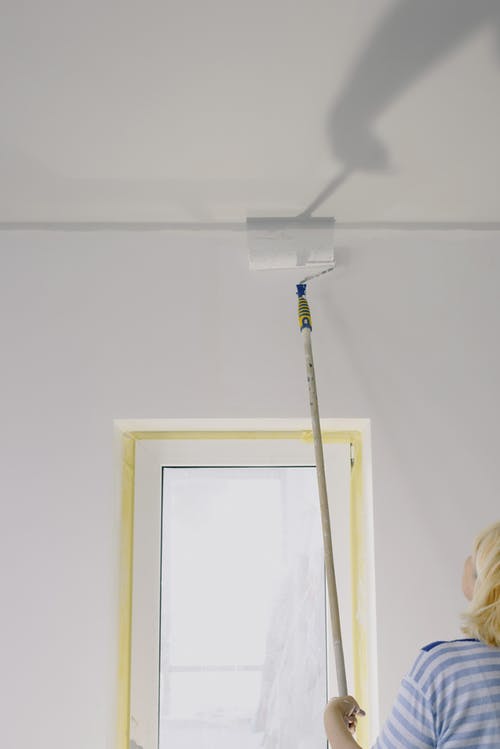You might well be tempted to get out your rollers and do it oneself when it pertains to painting your home. Should you, however, do so? While applying a coat or 2 of paint may appear straightforward, there are some major things to be considered before taking on a job on your own.
It actually depends on the individual’s level of skill, the equipment they have, the project’s complexity, and the amount of preliminary work that remains to be improved. So, how can you know when you should undertake a DIY paint job and when you should pay a pro?
If You’re Not Sure, Get A Pro If:
You have a lot of space
People frequently overlook the need of safety. It’s not worthwhile it if you can’t reach what it is you’re doing safely with a stepladder. For the purpose of a layer of paint, don’t risk exerting yourself—or worse, collapsing.
Furthermore, if you’re fighting to touch your canvas, you’re more likely to make sloppy mistakes. If your roof has any flood damage, we recommend hiring a professional. Hire a drywall firm to come in if you’ve a significant leak in your ceilings and the texture was falling off.

You’ve chosen a unique finish
High glosses and lacquer should be left to the professionals unless you have prior experience with specialty paints. Lacquers are usually applied with a spray gun. That’s a path you wouldn’t want to go. Also keep in mind that just about any high-shine application will quickly draw attention to flaws. Because of the possibility of markings, even experts should be cautious while applying this type of paint. Instead, he recommends using paints with a flat or matte feel. They’re more accommodating, and the dents and dings don’t show up as much.
The tool being used also depends on the finish. You can use a microfiber roller sleeve if you’re comfortable, if not it is better to go with a professional.
You’ll have to remove the old paint
If your house was built upwards of 40 years ago, it’s possible that lead-based paint was used on the walls. It can cause major health concerns, like as lead contamination, if inhaled, which is even more reason to hire a professional. Lead can be created by scarping, sanding, or scuffing.
So, what’s the point of removing old paint? Because painting is only as good as what’s behind it, it’s critical to remove previous coats of paint. Fresh paint would just sit over the previous layer without proper prep work—sanding and priming provide a surface for the paint to adhere to. You really should take it down and do it right the first time—it will last a long time.

Go ahead and do it yourself
If your surfaces are in decent shape and all you want to do is alter the colour, go ahead and DIY. Touching up little blemishes or painting a child’s room, for instance, don’t always necessitate the services of a professional. Moving your furniture out of the room and having a step ladder out is all it takes to paint a guest room. It does not necessitate a lot of time or effort. However, because you’re not working with a pro doesn’t mean you shouldn’t invest in quality equipment.
You paid $70 for a gallon of paint, but you’re planning to use a $1 roller to paint it? If you want to go to a higher degree of quality, you’ll need to invest in good tools. If you have the right tools, you might be able to get a good result.





